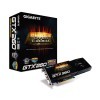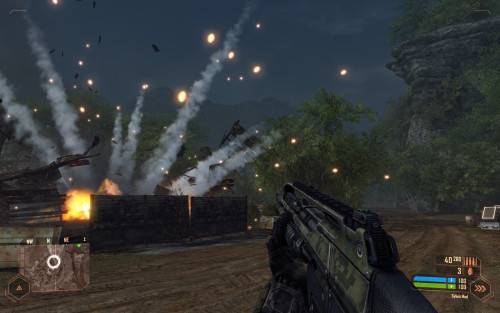- Qualcomm Launches Snapdragon 4 Gen 2 Mobile Platform
- AMD Launches Ryzen PRO 7000 Series Mobile & Desktop Platform
- Intel Launches Sleek Single-Slot Arc Pro A60 Workstation Graphics Card
- NVIDIA Announces Latest Ada Lovelace Additions: GeForce RTX 4060 Ti & RTX 4060
- Maxon Redshift With AMD Radeon GPU Rendering Support Now Available
Gigabyte GeForce GTX 260 Super Overclock

NVIDIA’s GeForce GTX 260 is not a new card. In fact, it’s been available for over a year in its 216 Core form. So is it even worth a look at today? Where Gigabyte’s “Super Overclock” version is concerned, yes. Although it costs less than a stock GTX 275, this new card beat it out in almost every single game and setting we put it through.
Page 5 – Crysis Warhead
Like Call of Duty, Crysis is another series that doesn’t need much of an introduction. Thanks to the fact that almost any comments section for a PC performance-related article asks, “Can it run Crysis?”, even those who don’t play computer games no doubt know what Crysis is. When Crytek first released Far Cry, it delivered an incredible game engine with huge capabilities, and Crysis simply took things to the next level.
Although the sequel, Warhead, has been available for just about a year, it still manages to push the highest-end systems to their breaking-point. It wasn’t until this past January that we finally found a graphics solution to handle the game at 2560×1600 at its Enthusiast level, but even that was without AA! Something tells me Crysis will be de facto for GPU benchmarking for the next while.
Manual Run-through: Whenever we have a new game in-hand for benchmarking, we make every attempt to explore each level of the game to find out which is the most brutal towards our hardware. Ironically, after spending hours exploring this game’s levels, we found the first level in the game, “Ambush”, to be the hardest on the GPU, so we stuck with it for our testing. Our run starts from the beginning of the level and stops shortly after we reach the first bridge.



I sense a theme brewing here. Like clockwork, the Super Overclock card pulled just ahead of the GTX 275. The differences are unbelievably minor, but they’re very consistent thus far.
|
Graphics Card
|
Best Playable
|
Min FPS
|
Avg. FPS
|
|
NVIDIA GTX 295 1792MB (Reference)
|
2560×1600 – Gamer, 0xAA
|
19
|
40.381
|
|
NVIDIA GTX 285 1GB (EVGA)
|
2560×1600 – Mainstream, 0xAA
|
27
|
50.073
|
|
NVIDIA GTX 260 896MB (GBT SOC)
|
2560×1600 – Mainstream, 0xAA
|
26
|
48.789
|
|
NVIDIA GTX 275 896MB (Reference)
|
2560×1600 – Mainstream, 0xAA
|
24
|
47.758
|
|
NVIDIA GTX 260 896MB (XFX)
|
2560×1600 – Mainstream, 0xAA
|
21
|
40.501
|
|
ATI HD 4890 1GB (Sapphire)
|
2560×1600 – Mainstream, 0xAA
|
19
|
39.096
|
|
ATI HD 4870 1GB (Reference)
|
2560×1600 – Mainstream, 0xAA
|
20
|
35.257
|
|
NVIDIA GTX 250 1GB (EVGA)
|
2560×1600 – Mainstream, 0xAA
|
18
|
34.475
|
|
ATI HD 4770 512MB (Gigabyte)
|
1920×1080 – Mainstream, 0xAA
|
19
|
46.856
|
Crysis is one of those few games that tend to work poorly on any machine, and until ATI adds CrossfireX support for its HD 5870’s, running the game really well at 2560×1600 at Enthusiast profile is tough to pull off. So, to retain gameplay that’s actually enjoyable, we bump the profile down to Mainstream, and still manage to pull ahead of the GTX 275.
Support our efforts! With ad revenue at an all-time low for written websites, we're relying more than ever on reader support to help us continue putting so much effort into this type of content. You can support us by becoming a Patron, or by using our Amazon shopping affiliate links listed through our articles. Thanks for your support!






